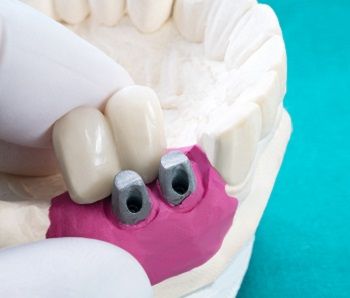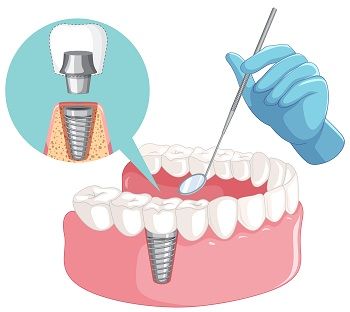What to Expect from Dental Implants Bone Grafting?
Dental Implants Solutions
A dental implant is a great, safe, and long-term alternative for a person in good general health who loses a tooth due to periodontal disease, injury, or another infection. A dental implant is an artificial tooth root put into the jaw by a dental implant surgeon to hold a replacement tooth or bridge in place. Implants look natural and operate like real teeth once the procedure is completed. Because implants do not rely on nearby teeth for support, they can also help to save other teeth. When installing a dental implant, bone grafting may be required as part of the procedure.
What is dental implant surgery?
Dental implant surgery is typically undertaken in stages. Your surgeon will first extract the affected tooth. This prepares the jawbone for the surgery. At this point, surgeons perform bone grafting. Bone grafting is a surgical treatment that replaces and regenerates missing bone while restoring correct facial contour.
When you lose teeth due to trauma, decay, or accident, bone loss often occurs, and the bone around the jaw begins to degenerate. If this is the case, bone graft provides a firmer foundation for a dental implant.

About Bone Grafting
A dental bone graft adds volume and density to your jaw where there has been bone loss. The bone graft material may be derived from your own body (autogenous), a human tissue bank (allograft), or an animal tissue bank (xenograft). In other circumstances, the bone graft material is artificial (alloplastic).
Once the bone graft is in place, it builds space for your body to rebuild itself. In other words, a dental bone graft serves as a scaffold for your bone tissue to grow and regenerate.
Sometimes, your surgeon may combine a dental bone graft with platelet-rich plasma (PRP). This is derived from a blood sample to enhance healing and tissue regeneration.
Who may need bone grafting surgery?
You require a dental bone transplant for bone loss in your jaw. You may need this procedure if you:
- Before getting a dental implant to replace a lost tooth.
- If you need a jaw rebuild before having dentures.
- Have bone loss from gum (periodontal) disease.

Types of bone grafting procedures
There are four main types including:
Socket preservation
This form of graft, also known as ridge preservation, is inserted in the socket immediately following tooth extraction. It covers the gap created by the lost tooth and keeps the edges of the socket from falling back in.
Ridge Augmentation
If you have missing teeth, your jawbone may be weaker than it was previously. Ridge augmentation broadens and expands the jawbone, providing a solid foundation for implants or other restoration procedures.
Bone grafting for sinus lift
The sinuses are located directly above the upper back teeth. If you have missing upper back teeth, the sinuses can drop and enter the area of the dental roots. Implants would be inappropriate in this situation because they would penetrate the sinus membrane. Your dental surgeon or periodontist can perform a sinus lift to resolve this issue. This treatment returns the sinus to its usual spot. Your oral surgeons will insert a dental bone graft underneath the sinus, providing a stable basis for future dental implants.
Periodontal bone graft
Gum disease infection can destroy the bone that supports the teeth, resulting in loose teeth. To avoid the teeth' mobility and offer additional support, your oral surgeon inserts a periodontal bone graft around an existing tooth.
What happens during a bone grafting procedure?
Your oral surgeon will conduct a thorough physical examination of your mouth before the procedure. Make sure your doctor knows if you are using any prescriptions, over-the-counter drugs, or supplements. Your oral surgeon will give you details on what to do before and on the day of your procedure. Therefore, it is critical to follow their guidelines.
Before your procedure, your doctor will determine which bone graft to utilize. Your oral surgeon will put you under general anesthesia, which will put you to sleep. An anesthesiologist will oversee your anesthesia and recovery. After that, your surgeon will create an incision in the skin above the transplant spot. The donated bone will then be shaped to fit the region. The graft will be maintained in place by one of the following:
- Pins
- Plates
- Screws
- Wires
- Cables
Once the graft is properly in place, your surgeon will use stitches to seal the incision or wound and wrap it. Furthermore, your surgeon will use splints to support the bone as it heals. Often, no casting or splint is required.
After the procedure
You may have discomfort, swelling, and bruising after a dental bone graft. These are common side effects that go away within a few days. Furthermore, your dentist will prescribe pain medications that can help with symptoms. During the first few days, you may detect little bone pieces coming out of the spot. These fragments frequently resemble grains of salt or sand. However, there is nothing to worry about, but you can consult your dentist to ensure you're recovering properly.
Dental bone grafting recovery can take three to nine months to heal - sometimes longer. Recovery timeframes depend on various factors, including the type of graft used, the location of the graft, and your body's ability to mend.
Is dental bone grafting painful?
Most patients who get dental bone grafts report little to no pain. Make sure to take all medications as directed and follow all postoperative instructions properly.
Risks related to bone grafting
Bone grafts in the mouth are typically considered safe. However, there are several risks associated with the procedure, including:
- Infection
- Severe bleeding
- Damage to the nerves
- Anesthesia complications
When should I contact my dentist?
Watch for worrying symptoms if you've had a dental bone graft. If you have any of the following symptoms, contact your dentist:
- Extremely painful
- Increased swelling
- Pus near the grafting site
- A fever of 101°F or greater
Conclusion
Jawbone loss harms your dental health and can lead to a cascade of problems, including mobility and tooth loss. If you suspect that your jawbone is deteriorating, dental surgery can help you regain your oral health, function, and overall quality of life. Dental bone transplants boost your chances of receiving dental implants and other restorative operations.
Contact your dentist in Walnut Creek, Massood Darvishzadeh, DDS, at Dental Implant Solutions to learn more about Dental Implants Bone Grafting.
Resource:
Dental bone grafting: why do you need it?
*This media/content or any other on this website does not prescribe, recommend, or prevent any treatment or procedure. Therefore, we highly recommend that you get the advice of a qualified dentist or other medical practitioners regarding your specific dental condition*
Subscribe To Our Newsletter
Get Updates And Learn From The Best
More To Explore



CONTACT US
Massood Darvishzadeh, DDS
2021 Mt Diablo Blvd., Suite 100A
Walnut Creek, CA 94596
(925) 939-2600info@dentalimplantsolutions.net